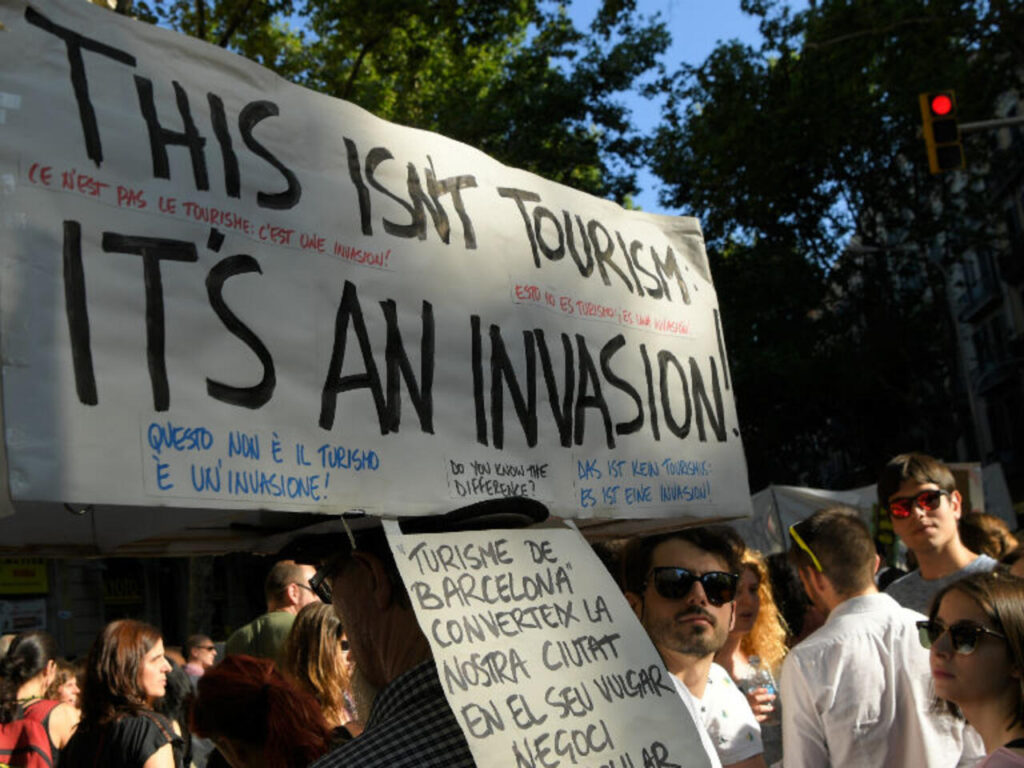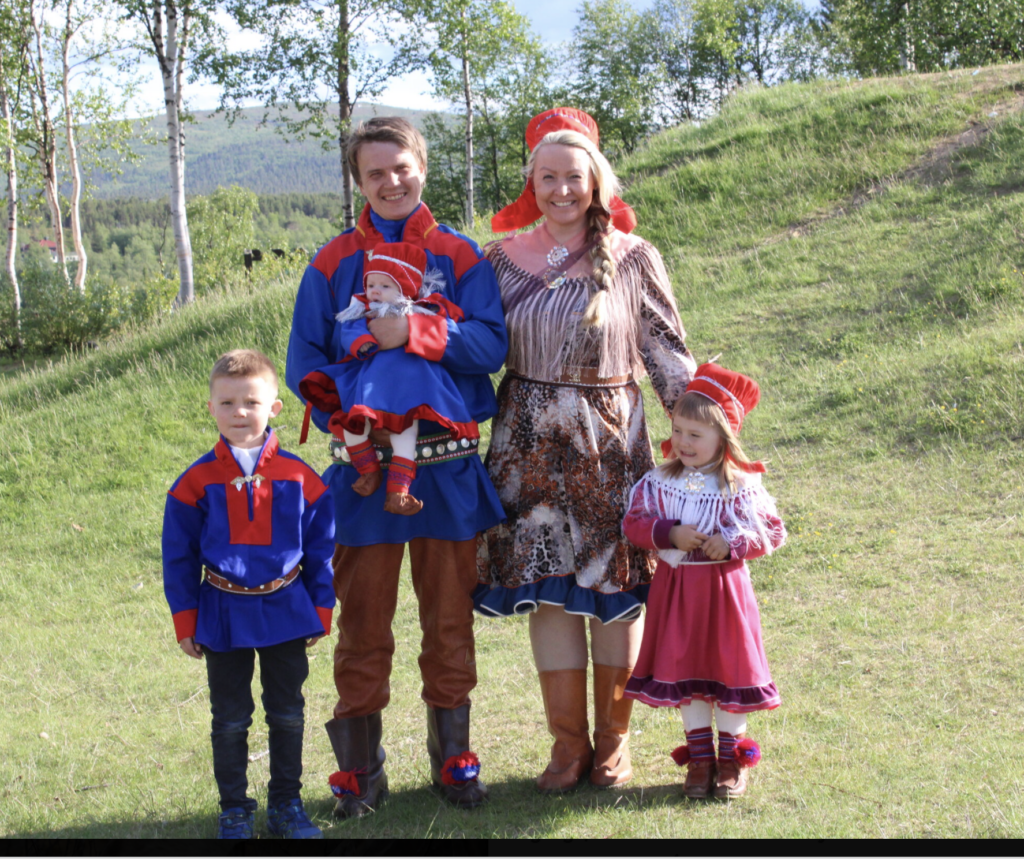Navigating the New Wave of Colonial Tourism

In Petra, Jordan, 250 Bedouin families relocated after Petra became a World Heritage Site. Today, 50 families remain completely dependent upon the tourist economy rather than their history of nomadic goat herding and cereal agriculture. Meanwhile, in Ao-Nang, Thailand, foreign investors continue to drive out locals with ridiculous prices, and in Barcelona, La Boqueria, once one of Europe’s best fresh food markets, is now only for tourists because prices are too high. What is happening here?
Similar to the explorers before them, modern-day travelers are setting their sights on destinations to conquer. Although some people may not genuinely know the extent of their impact or involvement, their carefree attitude and approach to discovery with little regard for local policies, customs, and environmental sensitivities contribute to the rise of colonial tourism and the devastating aftermath for vulnerable populations at its mercy. Unfortunately, unfettered capitalism and unaware tourists continue to destroy the hearts of cities and wilderness alike.

For the first time in history, protests against mass and over-tourism are happening. Thanks to short-term rentals, rents are skyrocketing in tourist hotspots and pushing away citizens from city centers. Overcrowding is choking the streets. Illegal and unregistered tour companies avoid local taxes and operate outside local safety and ethical standards. Pollution is rising from the hoards and stresses upon local infrastructures not ready to handle the influx. When visitors from other countries are insensitive to the norms of their new surroundings, a loss of culture and cultural identity becomes the inevitable standard.
Ironically, these protests are happening in Spain and Italy—the original colonizers of the world. Centuries later, it seems they are getting a taste of their own medicine. Despite all that, there is no denying swaths of foreigners are making their way to hotspots without regard to local populations. These same tourists might even think that their presence helps local economies. Of course, leave it to the children of industrialization to believe that unending capitalist growth will bring about positive change for the world.
However, in all likelihood, most travelers just don’t think about it.
Many present-day travelers—too busy checking off their bucket lists and capturing the perfect images to show off on social media—are as self-serving as the empires they call home. Vacations are a much-deserved break from the tireless work throughout the year. Trips are something done to treat oneself or for a celebration after a big accomplishment. And travel today has become social currency. At one point, travel was not a measure of wealth or social status. People in 999 BC were not bragging about their trip to Sicily but about the size of their burial tomb. At the turn of the millennia, Romans showed their wealth through art and lavish banquets. Around the Middle Ages, status became how big your home was. But today, travel has become social currency. Influencers sharing their vacations in Bali have become the standard fantasy of success and mental well-being. Digital nomads in Puerto Rico symbolize freedom and mastery over life. The ease of travel and a connected digital world have launched us into others’ lives like never before. At the same time, the fantasy is fraying at the edges and this had a lot to do with this idea of colonial tourism.
Striking a Balance: How to Be Better Participants While Traveling
On the other side of colonial tourism, there are good forms of travel out there and these movements are on the rise. Eco tourism, agro-tourism, and rural tourism are all part of a growing field of sustainable tourism. An easy way to think of it revolves around an epiphany by Craig Foster in “My Octopus Teacher.” After spending every day with an octopus for a year, Foster came to the epiphany that he was not merely an observer but a participant in that underwater world. All tourists are participants in the places they visit—the throngs of tourists wandering the streets of Florence, the crowds on the edge of the Grand Canyon, and the multitudes at the Great Wall. Those places are now synonymous with crowds and they’ve become one in the same. People are going to observe and experience those sites. Yet, what most people don’t see is that they are participants in the experience. For some, it’s just participating in being in the masses—the masses that are wrecking the life of locals, pushing up local rents, clogging the streets, and sucking the soul and culture from a place. So, for travelers, the question becomes, how do I become a better participant?
While it may be challenging to contextualize becoming better participants in large cities across Europe, perhaps some answers lay in travels to the lands of indigenous cultures. During a recent group visit to a Sámi Family in northern Norway, the question, ‘How do we become better participants’ came up. The Sámi are the Indigenous peoples of Sápmi (Northern Norway, Sweden, Finland, and Russia). Initially, the question centered more around connection, but the reality is that these words go hand in hand with being better travelers. They both require presence while in the moment. Everything in the planning of this short trip revolved around this question. When it comes to becoming better participants, here are some actions to take on future journeys.

Present Gifts
Always bring gifts upon arrival. One of the first presumptions of the industrialized world is that money commands entitlement. Yes, travelers pay their hosts with money—but this is just an exchange of time and space. Money does not buy connection, vulnerability, or respect. Gifts are so much more. There is a reason it is listed as one of the languages of love in the book “The Five Love Languages” by Gary Chapman. Gifts require thoughtfulness, intention, and vulnerability. It shows recipients that you have considered them and put thought into them. It gives a sense of who people are as individuals and it’s a piece of themselves. The reason that gifts show vulnerability is that gifts are given without the expectation of receiving anything in return. There is a risk in giving gifts. If you give something you have put true intent and consideration into and the receiver rejects this, you risk getting hurt because you put skin in the game.
Upon arriving at the Sámi family’s home, it was the typical social awkwardness and tension of meeting new people. The children were on the periphery staring in. Everyone could sense their thoughts ‘Who are these people in our space? And when will they leave so we can play?’ That’s when the group brought out the gifts and they just lit up. You could tangibly feel the energy lighten and an easier more comfortable presence enter the room. There was laughter and interest. ‘What are these things that were brought from a world away? Why did you bring them? What is this?’ Unlike gifts, money couldn’t have done any of this.
Be of Service
On another expedition to the jungles of Costa Rica we visited a tribe called the Bri Bri, the goal was to show that the travelers we were not mere observers. So, as the organizer, I asked if there was a project that could use the group’s help. Something real-time and that would actually help. Again, the intention around helping out was not to “save the day” with all the help and work. Rather, it was for connection.

The project the group ended up helping with during the stay was a roof project. We went with our hosts father to collect palm leaves for a new building they were constructing for their tribe. Watching him B-Line up to the ridge was amazing. By the way Costa Ricans don’t really go for switch back trails. He showed us how to cultivate Palm leaves so it doesn’t kill the tree and they can return to collect more leaves a couple years later. After a while of collecting leaves we took them down the mountain for everyone to help weave roofing lengths. Incredible learning how to construct a roof with palms, bamboo and vines, all from their backyard. After this experience, they came closer, not just physically but energetically. There was a feeling of ‘Wow, these people aren’t just here to be taken care of like babies in the Jungle.’ It was an act of joining them in their duties and therefore becoming a part of solving problems in their community—an act of connection.
Again this project wasn’t about providing monumental help, but all these aspects come together for a more deep and meaningful experience.
When trying to be of service, consider asking the host these questions to determine the best way to help: Is there a project your community is working on that we can help with? Are there different roles for females than males?

Cook Something
No matter the location, so much of life revolves around the kitchen or the places people cook. When someone helps cook, they are helping people to sustain themselves, learning customs, and giving of themselves. The sharing of stories and cultural traditions has been around the fire since the advent of modern man. This is something everyone can relate to and where we can connect as human beings at the most fundamental level. Just think of it as assisting in providing sustenance for life. It sustains the life force down to the cellular level. A Hungarian identifies with the paprika that they eat. Paella runs through the veins of the Spanish. The Japanese are of the ocean with raw fish nourishing their microbiome. When people eat locally, they start becoming a place. Eating locally when traveling, joining someone in the kitchen, and interacting during a meal enables being part of someone’s experience.
If cooking sounds appealing during travels, approach the host and volunteer to assist. Start by asking, how can we help with cooking or can we help gather, hunt, or bring anything for the meal?
Learn Local History
Knowing a people’s history is knowing where they come from. There is an amazing book titled “It Didn’t Start with You” by Mark Wolynn. This book poses the theory that we still suffer from traumas experienced by our ancestors. That we live with these repercussions in our daily lives. You cannot understand Native Americans today without understanding that their tribes live on reservations and nearly every child 100 years ago was forced away from their family and into schools of assimilation. You cannot understand the Chinese without knowing about Mao Zedong’s Cultural Revolution and its lasting effects on the modern day. Learning a place’s history is paramount to understanding people and the places they live. Often, history is built into who a person is—both the positive and the negative. If someone thinks about their own life and the struggles they went through, not only might historical atrocities be a part of what they are sensitive to but they might also be the source of your greatest strengths. As with the Native Americans, many live on reservations riddled with alcoholism and abuse, but they are still here. Their resilience is incredible and they are self-governing in America and have justified pride.
Figuring out what area to focus on begins by asking the hosts, what piece of history could I research that would help me best understand your culture or family? Are there pieces of this history that you still struggle with today? Starting there shows genuine interest and opens up information and insights that may have otherwise remain hidden had you not asked those probing questions.
Taking these actions while traveling can go far in curbing colonial tourism and building better relations for hosts and visitors now and well into the future.
Blake Dyer is the Founder of Sunnyside Expeditions and has organized international trips and events for over a decade. Exploring and enabling people to explore new worlds is a passion that his mother instilled in him at an early age.